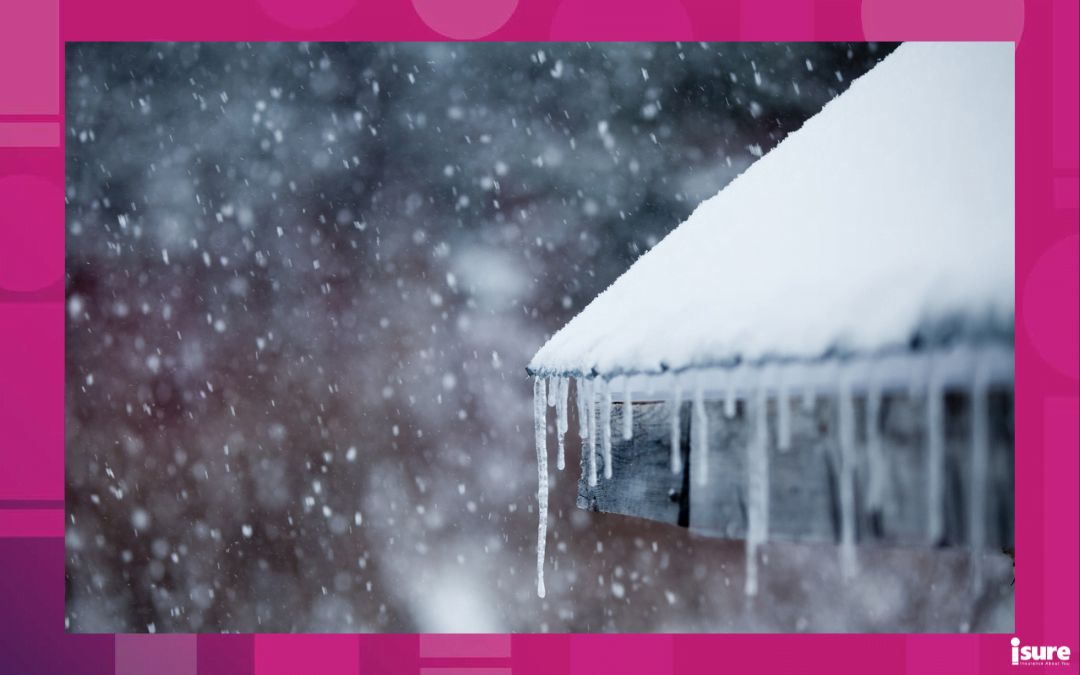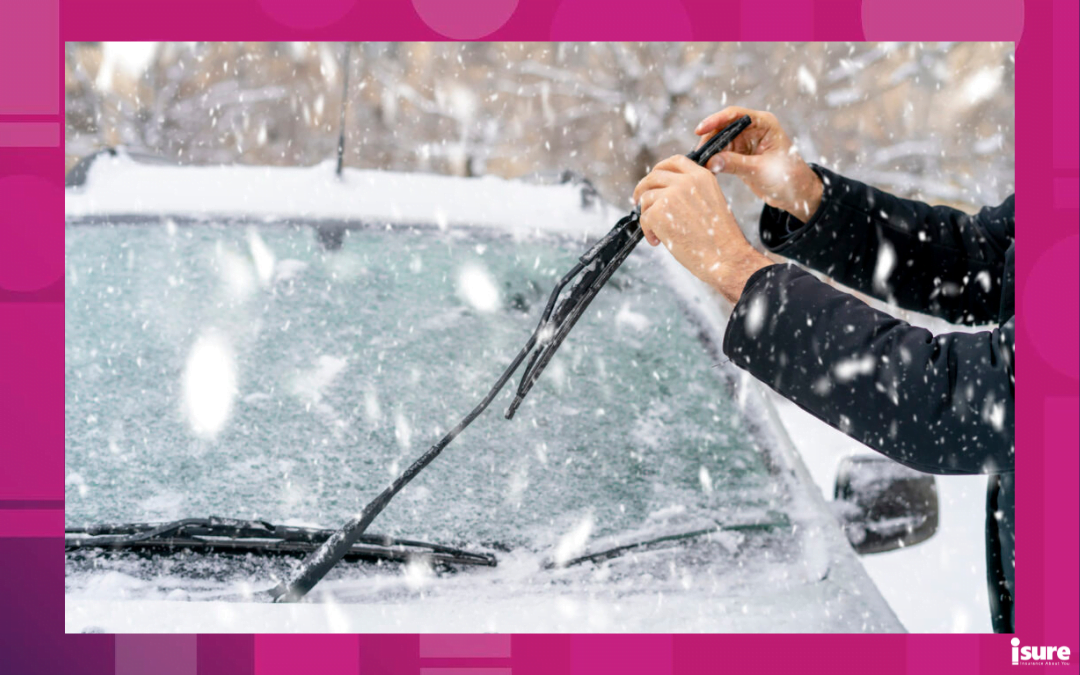Old Man Winter is rearing his ice-cold head in Canada. Though you may have prepared your home before the winter season, have you kept up with winter home maintenance? Given the low temperatures and unpredictable weather, maintaining your home is vital. Below, we list our major tips and possible hazards to look out for in the winter months.
1. Shovel and salt your driveways and sidewalks
One of the easiest ways to maintain your home in the winter and to keep it safe is to clear your driveway and sidewalk of any ice and snow. It’s important to shovel your driveway in case of an emergency, avoiding any slip-and-fall injuries, when possible. Even for simple errands, such as groceries, it is easier to move around when your driveway is clean. Similarly, ensuring you salt your driveway or any surrounding sidewalks is an easy way to prevent any accidents (and possible lawsuits!) It’s important to get fresh air while working from home, and one of the easiest ways to get outside is by going for walks. If the sidewalk surrounding your home isn’t clear or salted, it can not only be dangerous for you and your family but also neighbours and others walking by. With Black Friday around the corner, there are many cost-effective and durable snow shovels you can purchase.
2. Remove excess snow from the roof, if possible
This tip for winter home maintenance specifically applies to homes (or commercial buildings) with a flat roof. However, it is also an important reminder for those with slanted roofs on their homes. Especially after a large snowstorm, leaving excess snow on the roof of your home can be dangerous. Why? It can lead to the roof collapsing from the additional weight. One of the easiest ways to remove excess snow from your roof is by using a snow rake. This method works particularly well for pitched roofs. For any flat roofs, only remove snow yourself if the house is one level. Otherwise, we recommend hiring a professional to get the job done.
3. Maintain your furnace pipes
Due to the often freezing temperatures in Canada, it is common for furnace pipes to freeze up. This is a huge issue, as it can cause the pipes to malfunction or burst which results in extreme property damage. Specifically, pipes in unheated interior spaces, such as attics, garages, and basements, are most at risk. Depending on the locations of pipes in your home, there are a few easy ways to ensure this element of winter home maintenance. If any pipes (specifically water supply lines) are located inside your garage, ensure your garage doors are closed whenever possible. This will keep heat inside the space, lowering the chances of any freezing on or inside the pipes.
Similarly, opening any cabinets will also help circulate warm air onto pipes. And if you and your family plan on leaving your home for an extended period, make sure to leave the heat on in your home. If you find pipes in your home that have already frozen over, here are three steps you can take to address the issue:
- Apply heat to the section of the pipe, an electric heating pad wrapped around the pipe, an electric hair dryer, or a portable space heater (kept away from flammable materials). As tempting as it may be, do not use a blowtorch, a kerosene/propane heater, a charcoal stove, or any device with an open flame. The high heat can damage the pipes or even start a fire.
- Apply heat until full water pressure is restored. Check all other faucets in your home to see whether you have additional frozen pipes. If one pipe freezes, others may freeze, too.
- Call a licensed plumber if you are unable to locate the frozen area, if the frozen area is not accessible, or if you cannot thaw the pipe.
4. Beware of ice dams
Another important winter home maintenance tip to keep in mind is ice dams. Ice dams are small humps of ice that form at the edge of a roof during extreme winter temperatures. They are mostly a result of poor insulation surrounding the roof. Ensuring eavestroughs surrounding the roof are cleaned when temperatures begin to rise is one of the easiest ways to maintain cleanliness and prevent ice dams from forming in the future. Below are three measures to take to prevent ice dams from forming and to cure existing dams:
- Seal all points where warm air leaks from the living space into the spaces immediately below the roof sheathing.
- Insulate the living space well enough to prevent conduction and convection of heat through the ceiling.
- Vent the space between the insulation and roof sheathing, so any heat that does leak through is carried away.
5. Keep the heat on and turn the water off
As mentioned before, if you have a cottage or plan on being away from your home for an extended period, be sure to keep the heat on and turn the water off to prevent any freezing pipes. As mentioned above, if your pipes freeze with water in them, it can risk having them expand and being damaged. The last thing you want is to get back to your cottage in the warmer weather and find out you have a bunch of damage to repair! This can be costly and time-consuming.
6. Adjust your ceiling fans
We all know that cold air goes to the floor while warm air rises. Did you know that ceiling fans are a great way of controlling this? A nice little life hack to save you money in the winter is to adjust the direction of your ceiling fans. This is especially viable if your home tends to have higher or vaulted ceilings. Having your ceiling fan spin in the right direction can have a major impact on the warmth of a room. Furthermore, it is very easy to do. Simply locate the control that allows you to switch the direction of your fan blades. To make your room extra warm and cozy in the winter, use your fans at their slowest setting.
7. Double-check your carbon monoxide and smoke detectors
It is always important to make sure your smoke and carbon monoxide detectors are in working order. However, it is especially important during the winter. Many CO2 and fire hazards present themselves during the colder months, from furnaces to space heaters. Additionally, your windows are always closed in the winter, sealing in any harmful chemicals. Luckily, double-checking it is as easy as pressing the “test” button. Make sure your alarms are free of dust and that the batteries are up to date. It is a good rule of thumb to replace both of your alarms every 10 years.
8. Make sure your home is heated safely
We all know how frigid the weather can get in the winter. With this said, it’s important to make sure you are safely heating your home to keep you and your family safe. Many steps should be taken before purchasing items to help heat your home. Not only will these steps give you peace of mind, but they also will help you save some money.
a) Keep your furnace clean
Making sure your furnace is ready to go is crucial when it comes to staying safe. The air filter in your furnace should not be clogged with any dust or debris. Not only will this ensure the air flowing into your home is clean, but it helps keep your furnace running smoothly. If your air filter is blocked or clogged with debris, the airflow will become compromised. This can result in your device overheating and potentially catching fire.
b) Use space heaters sparingly, and turn them off when you leave the room
When using space heaters, make sure you use them sparingly and safely. For one, you should never leave a space heater unattended, especially for long periods. This is especially true when it comes to older models. Keep in mind that many older models are unable to be kept on overnight, so it is also important to look into how long you should be using it to warm your space at one time. The same will apply to electric fireplaces; turn them off when not in the room!
You should also make sure your space heater is at least three feet away from any flammable objects, such as curtains or loose papers. Furthermore, you should make sure your space heater is never plugged into an extension cord or power strip as it may overheat or trip the fuse.
c) Do not use your oven to heat your home
It is a common misconception that using your oven to heat your home is a safe idea. However, this is not the case. Never turn on your oven and open the door or light burners to heat your home. Not only is this method ineffective, but it can lead to fires, and even carbon monoxide risks if your stove is gas-powered. Carbon monoxide can be deadly to both people and animals who breathe it in, so you must follow this tip for ultimate safety precautions. You may believe an electric oven is a safer option. Although this may be the case, it has been proven time after time that this is an ineffective method and can still lead to fire hazards.
d) Use your fireplace safely
Similar to space heaters, you should make sure no flammable objects are kept near your fireplace. On top of this, making sure your fireplace is not left unattended or when you sleep is crucial, as this is very often how fires start. When you are done, make sure you dispose of the ashes in a fire-safe container a safe distance from your home. If your fireplace is electric, make sure it has been properly turned off and that the fan is working to cool it down.
Before you use your fireplace altogether, you should make sure your chimney is clean. Similar to your furnace, it is important to keep up with regular maintenance. When you burn a fire, your chimney will collect soot as well as creosote. This is an oily residue that appears as a result of burning wood. When this collects over time, it can create a dangerous fire hazard. Making sure your chimney is swept and cleaned once a year is a good amount of time to make sure your home remains safe.
We hope that these winter home maintenance tips will help keep your home safe and maintained during the colder season! As always, if you have any issues, home insurance claims, or questions, contact your isure broker for assistance or more information.




